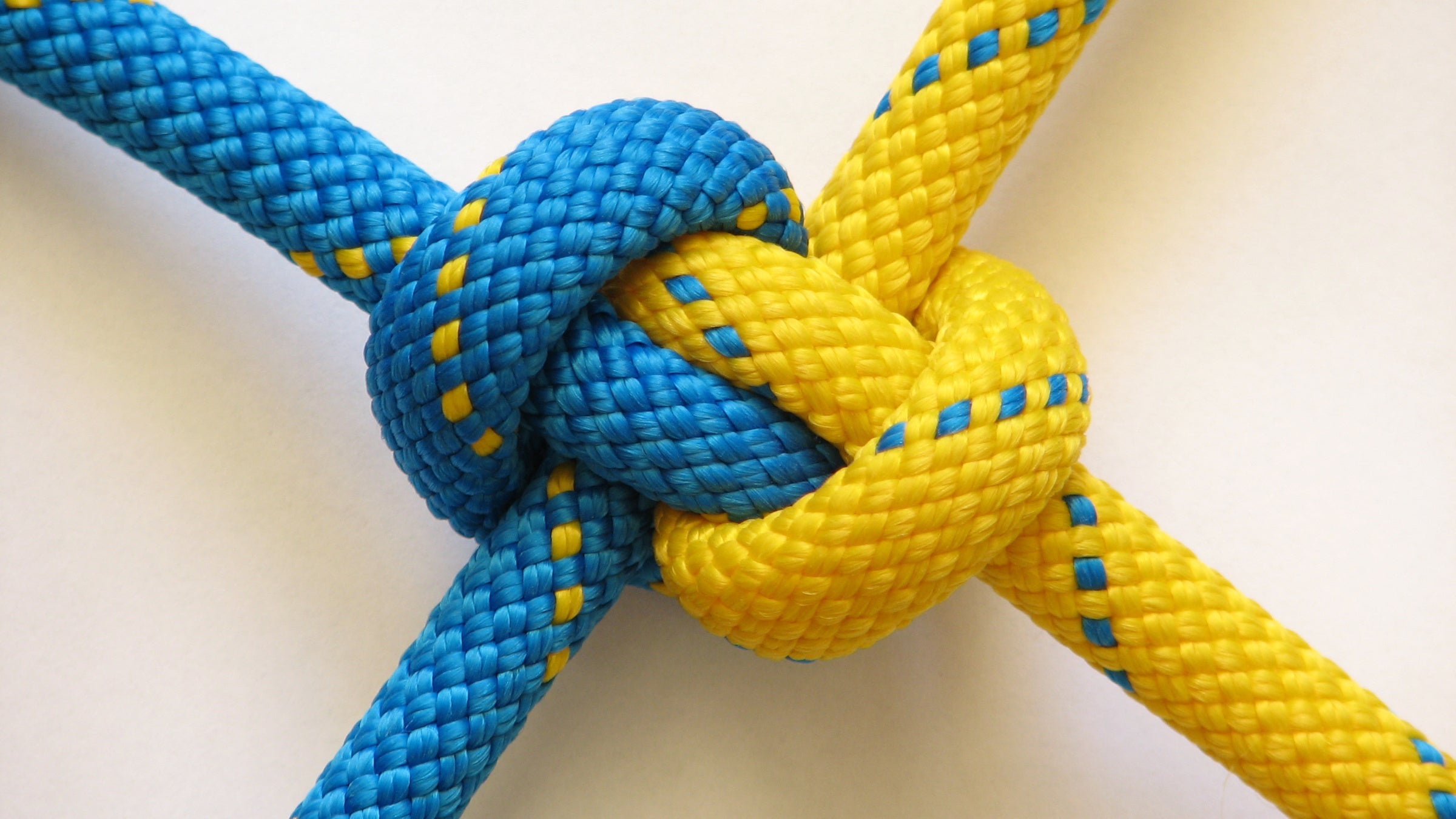Learning how to tie your shoelaces all those years ago sure has come in handy, and there are even more knots that can make your life easier in the backcountry. We reached out to Richard Hopkins, author of several knot-tying books and a demonstrator for the International Guild of Knot Tyers (IGKT), to learn five for various applications.
“With luck, so rare in the outdoors, or ingenuity, most obstacles to a successful hike or backpacking trip can be overcome using one or more of this selection,” Hopkins said.
Before heading out, Hopkins recommends checking that the ends of all your cords are not fraying. If your rope is in fact splitting, or if you plan to cut it, he says that , a thin cord such as twine that you wrap around the end of the rope, can keep the end tidy and together.
Best for almost anything: Bowline
If there’s one knot to learn, it’s the bowline, which is universally considered the most versatile knot. The fixed loop at the end of the rope is useful for hanging a bear bag, attaching tent guylines to stakes, anchoring a hammock to a tree, hauling gear or logs behind you, or cinching down a lid. You can also use it to rescue someone who has fallen into a river or down a slope the same way a lifeguard would use a ring buoy.
Hopkins said that it’s the knot he’s most frequently asked about but also one that trips people up since there are so many different ways to tie it. “If one method fails to penetrate the brain, another may succeed,” he says. “Never think that you cannot tie it.”
Best for tensioning tent guylines: Tautline Hitch
Tighten and loosen tent or , an adjustable knot that can slide back and forth, to and from the anchor point. Hopkins says this is a quick way to save you from undoing and retying knots when you need to fine-tune tension. Other applications include rigging an adjustable hanger, such as for dangling a pot over a fire or a bucket of water for a makeshift shower. Known to occasionally slip, this is one to keep an eye on and adjust as needed.
Best for joining ropes: Hunter’s Bend
You could use the bowline or the square knot to join ropes together, but Hopkins says that the hunter’s bend is stronger and just as quick to tie. (It’s also the knot that brought a group of knotting enthusiasts together to form the IGKT over 40 years ago.) Requiring only about six inches at the end of each rope, it’s the most efficient use of rope if you have a limited amount.
Best for attaching ridgelines to trees: Siberian Hitch
Historically used by the Evenk people of Siberia who needed to tie knots while wearing thick mittens, the Siberian Hitch (also known as the Evenk Knot) is handy in cold climates. Without exposing your hands to the cold, tie up each end to a tree to set up a ridgeline for a tent or tarp. Then in the morning when you’re packing up camp quickly, Hopkins says you can quickly release the knot with one pull of the end.
Best for hanging or hauling gear: Alpine Butterfly
The alpine butterfly is a midline knot that can bear heavy loads. “It enables you to fix a loop anywhere along a line without using the ends of the rope,” Hopkins says. With roots in mountain climbing, hikers in the middle of a rope team can use it to stay together along a ridgeline, on a glacier, or in low-visibility conditions. You can also use it as a handle for hauling, to hang things from the middle of a line, or as a foot loop when climbing. In some cases, the Alpine Butterfly can also be used to isolate damaged sections of rope without having to cut or splice it.


